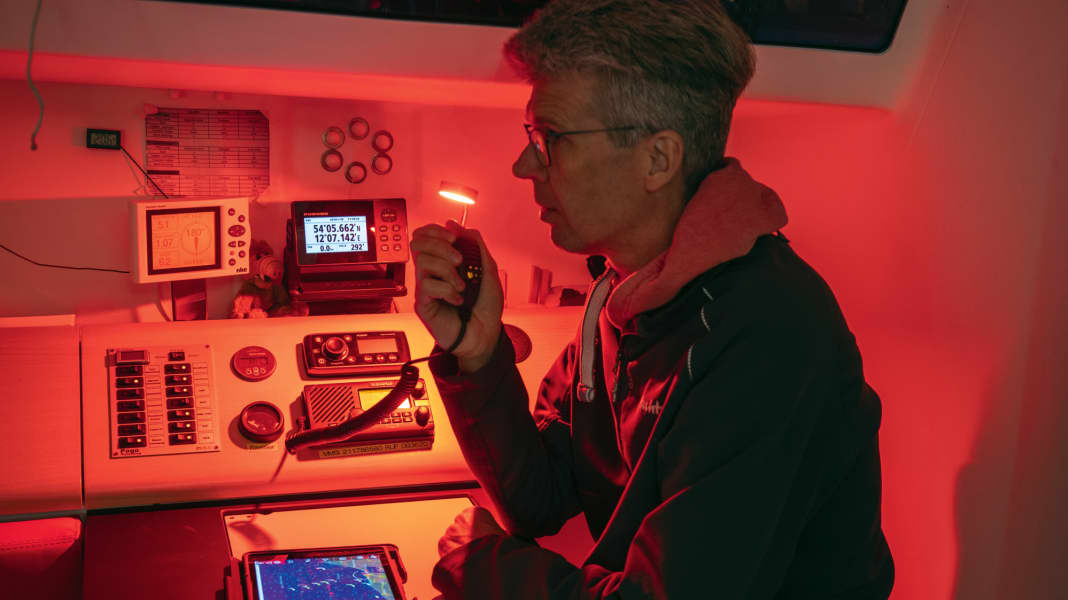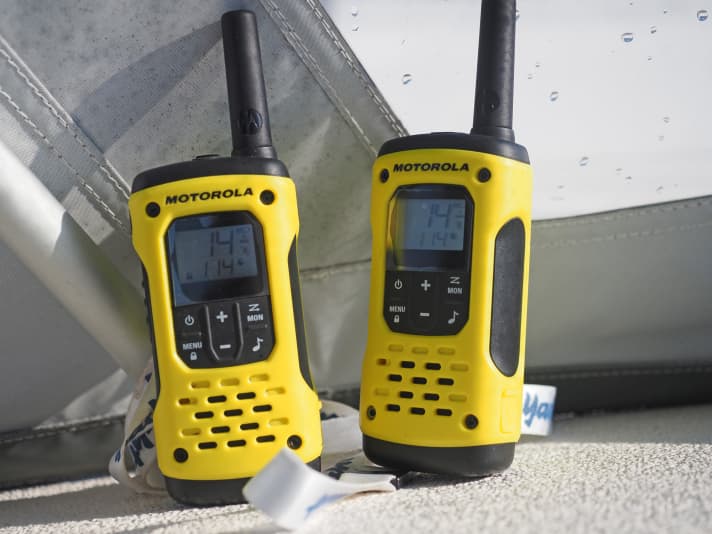
Admittedly, the majority of everyday communication on board now takes place over the phone. Who still uses VHF at the weekend to find out in which bay they are meeting to anchor or how long a crew friend still needs to get to the harbour? These things have long been done via WhatsApp. Even bridge passages are sometimes ordered by phone. Simply because instead of a working channel, only the number of the company mobile phone is shown on the nautical chart. Nevertheless, a VHF radio on board is still justified and remains an important part of the safety equipment. As a general rule, once the connection has been established on channel 16, switch to channel 72 or 69 for further communication
In an emergency, you can send out a call for help and position at the touch of a button and then speak to all units involved in the rescue, radio the freighter on a collision course - VHF is and remains the direct contact to other ships and yachts, even without a telephone number. Thanks to AIS and MMSI, targeted enquiries are also possible within a radius of up to 30 nautical miles.
Anyone travelling in the Mediterranean knows that it's better not to contact marineros and petrol stations by phone, because someone has to answer first. In the high season, you often wait in vain. The radio, on the other hand, is almost always in listening mode.
An SRC and a licence are required for VHF radio
But buying a radio is not enough. In order to use the VHF marine radio system, you need the "Short Range Certificate" (SRC). Depending on the provider, a course for the radio licence costs between 40 and 200 euros. There is also an examination fee of around 130 euros.
The device itself must be allocated an individual number, as the Federal Network Agency calls it. When you register a "Ship Station Licence", you also receive the Maritime Mobile Service Identity, or MMSI for short. The fee for this is around 60 euros, plus an annual usage fee of currently around three euros.
Sham-free radio

Handheld devices are authorised in German marine radio, but a radio licence, the SRC, is also required for operation. VHF is therefore ruled out for communication with the youngsters in the dinghy. PMR radios, commonly known as walkie-talkies, are much more practical. There is no test or fee for these small handheld devices.
The ten kilometre range advertised by the manufacturer is a pipe dream in practice. Especially as there are noticeable differences in speech intelligibility and range. Anyone transmitting from the yacht to the dinghy in open water can cover around three nautical miles with good equipment. In the mast forest in the harbour, the range is less. However, the technology is easily sufficient to call the crab-fishing crew on board for a meal. The waterproof and buoyant T92 H2O from Motorola have proved their worth. The robust devices cost around 100 euros in a set of two.
